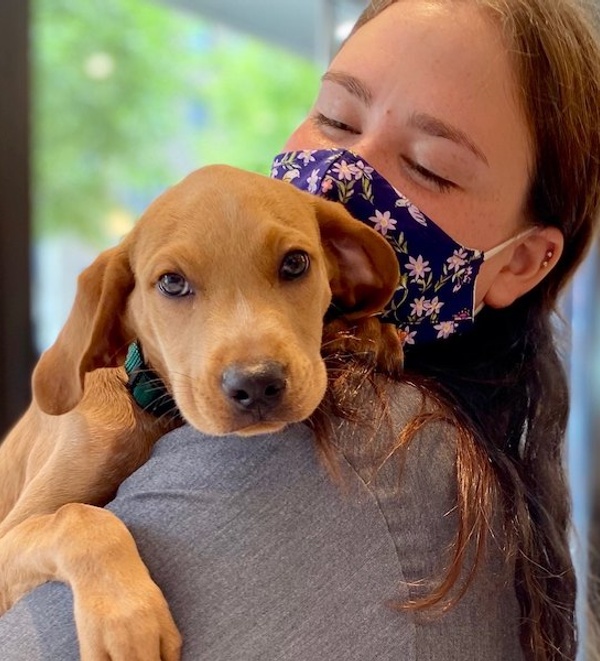
Urogenital Surgeries for Cats & Dogs
Urogenital surgery refers to any surgery performed on the urinary tract (most commonly, the urinary bladder or urethra) or the reproductive organs (penis, testicles, vagina, ovaries, and uterus). Below are some of the common surgeries we perform at Bond Vet.
BOOK A FREE SURGERY CONSULTATION
PU surgery cat and dog (for urethral stones)
PU stands for perineal urethrostomy, and described simply, it’s a procedure that creates a new “hole” for a pet to urinate from at the perineum, the space between the anus and genitals.
This procedure reduces the risk of urinary blockages by decreasing the length of the “tube” (urethra) the urine has to travel through, and also eliminating the narrowest portion of the tube.
This surgery is most commonly performed on male cats, and it’s reserved for pets with severe or recurrent conditions that make it difficult for them to urinate naturally. Examples include frequent urinary obstructions or blockages, urethral stones that can’t be removed or dislodged, and less commonly, trauma.
Urethropexy
Urethral prolapse is a condition in which the tissue on the inside of the urethra (the “tube” urine passes through from the bladder to the vagina or penis) protrudes externally, most commonly outside the tip of the penis in young male dogs. Urethropexy is surgery performed to correct this condition.
Cystotomy- bladder stones and bladder mass
A cystotomy refers to a surgery of the urinary bladder. This may be necessary to remove bladder stones, or to remove a mass/cancer from the wall of the bladder.
Cryptorchid - abd. and inguinal
Cryptorchid means that a pet’s testicles didn’t descend into the scrotum as they should. Instead, one testicle (or possibly both testicles) is stuck either in the abdomen, or in the inguinal (groin) area.
A cryptorchid surgery is a special type of neuter surgery performed to remove these “stuck” testicles.
Spay
A spay is also known as an “ovariohysterectomy,” and it’s the routine surgery performed to remove the uterus and ovaries from a female dog or cat.
This surgery prevents breeding, reduces undesirable hormonally influenced behaviors (like urine marking or escaping the home to look for a mate), and helps to prevent certain health conditions and some cancers.
Neuter
A neuter is the surgery routinely performed on male dogs and cats to remove the testicles.
This surgery prevents breeding, reduces undesirable hormonally influenced behaviors (like aggression, mounting, urine marking, or escaping the home to look for a mate), and helps to prevent certain health conditions and some cancers.
LEARN MORE ABOUT SPAYS & NEUTERS AT BOND VET
Anal sacculectomy
A removal of the anal glands may be recommended for some pets who have recurrent anal gland infections or impactions (blockages), or due to a cancer of the gland.
Perineal Hernia Repair
A perineal hernia is when the muscles of the pelvic floor are weakened, allowing an organ (such as the urinary bladder, prostate, or rectum) to protrude under the skin near the anus.
This can be very dangerous if the organ gets stuck, and a perineal hernia repair surgery is needed to fix it.
Pyometra
A pyometra is a condition in which the uterus becomes infected, thickened, and filled with pus—and it can be fatal due to uterine rupture or bacterial toxins leading to shock.
The surgical procedure for this condition is technically the same as a spay (removing the uterus and ovaries), but it’s done on an emergency basis — which is necessary, but it also means the risks of the procedure are significantly higher due to infection and fragility of the uterus.
Having your pet routinely spayed can prevent the risk of a pyometra ever developing.
What does urogenital surgery entail?
As you can probably imagine, the details of these surgeries vary depending on exactly what your individual pet needs and which part of the urinary and/or reproductive tract is being operated upon—and also with whether the surgery was planned ahead of time, or is done on an emergency basis.
But, the important thing to know is, your furry best friend will be in good hands with an experienced surgeon and a caring team to handle their anesthesia and monitoring. You’ll receive updates, and your pet will be monitored until they are ready to return home — at which point, you’ll receive detailed instructions for their continued home care and any needed rechecks.
What does recovery look like?
When your pet comes home, they’ll have sutures (stitches) on the part of their body that was operated on. You’ll receive instructions for monitoring these sutures, as well as an Elizabethan collar to prevent your furkid from licking the incision and accidentally removing their sutures.
Your dog or cat will likely have medications to administer, too—your vet team will explain how to give them. Remember, don’t give any other medications without talking to your vet first, since human meds can be toxic to pets and may interact with the medications they are already receiving.
Rest will also be important for healing.
Your individual pet’s instructions may vary, so always follow your vet’s instructions exactly, and call your vet’s office with any questions or concerns.